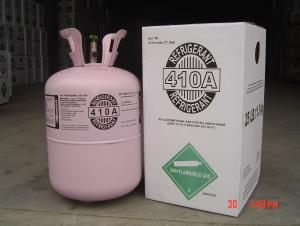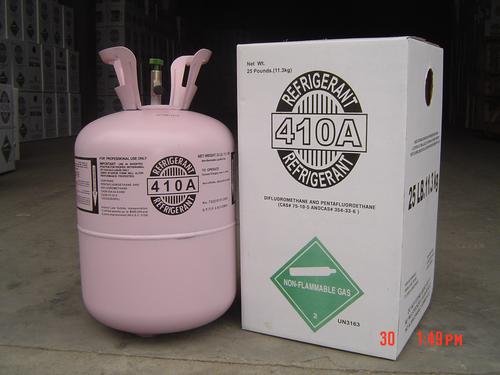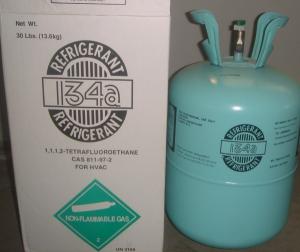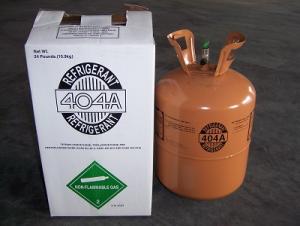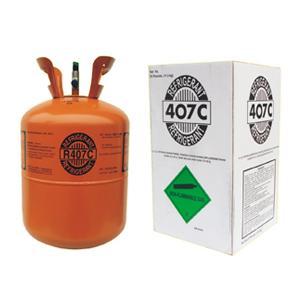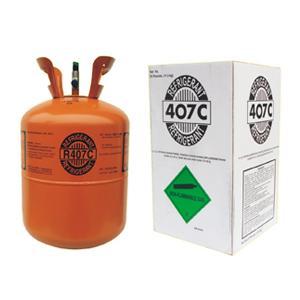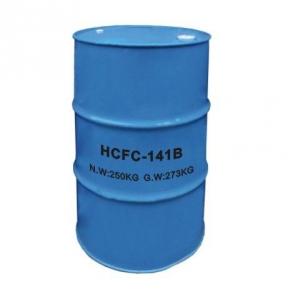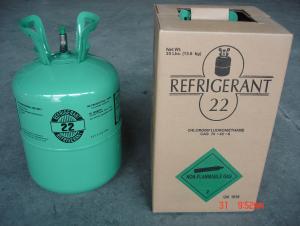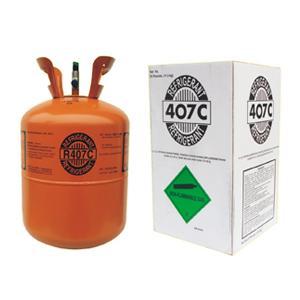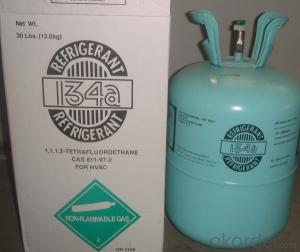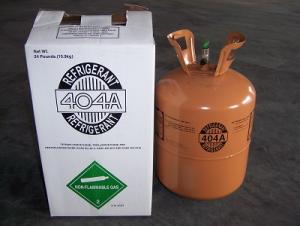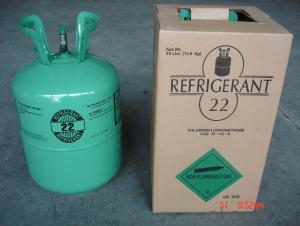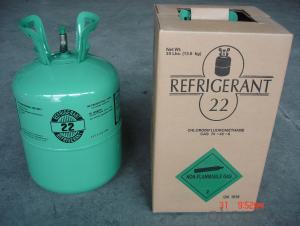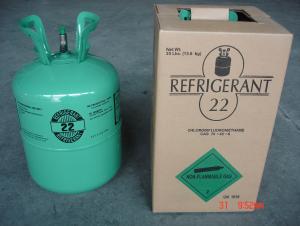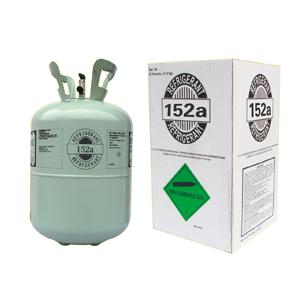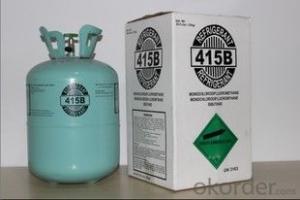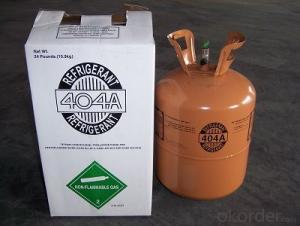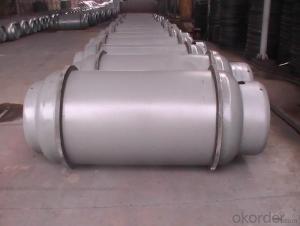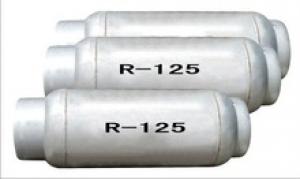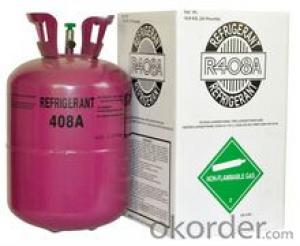R22 Replacement Gas in Domestic Air Conditioner
- Loading Port:
- Ningbo
- Payment Terms:
- TT OR LC
- Min Order Qty:
- -
- Supply Capability:
- 1000MT m.t./month
OKorder Service Pledge
OKorder Financial Service
You Might Also Like
Specifications
r410a refrigerant
high purity and quality
good price
OEM
leading manufacturer high quality r410a refrigerant price
Q: MOQ A: Refrigerant is hazardous article, it doesn't fit less than continer load, however if you can arrange shipping by yourself, there is no strict policy on MOQ.
Q: Quality A: Our plant works with everything from the raw material to the finished product. We have R&D, Quality Control and Certificates. All products are with high quality, we guarantee you get the qualified product.
Q: Advantage A: Advanced technology and equipment, high quality products, efficient production time and good delivery, accept OEM and Customized. Professional, high quality, reasonable price is our core competitiveness. |
Product description
| R410a | |
| COMPONENTS | |
| Pentafluoroethane (HFC125) DIFLUOROMETHANE (HFC-32) | CAS NUMBER WEIGHT% 354-33-6 50 75-10-5 50 |
| Physical Property | |
| Molecular Weight | 72.58 |
| Boiling Point,°C | -51.6 |
| Critical Temperature, °C | 72.5 |
| Critical Pressure, Mpa | 4.95 |
| Specific Heat of Liquid,30°C.[KJ/(kg. °C)] | 1.78 |
| ODP | 0 |
| GWP | 2000 |
| Quality Index | |
| Purity,% | ≥99.8 |
| Moisture, PPm | ≤10 |
| Acidity, PPm | ≤1 |
| Vapor Residue, PPm | ≤100 |
| Appearance | Colorless, No turbid |
| Odor | No Strange Stench |
| Packing | Disposable cylinder 25lb/11.3kg; |
| Recyclable cylinder 926L; | |
| ISO – Tank. | |
| Applications | ·New residential and commercial air conditioning and heat pumps . |
- Q: Ionic compounds, covalent compounds, electrolytes, non-electrolytes, which are both compounds and inorganic compounds
- An ionic compound consisting of a cation and an anion. Active metals (such as sodium, potassium, calcium, magnesium, etc.) and active non-metallic (such as fluorine, chlorine, oxygen, sulfur, etc.) when the combination of active metal loss of electrons to form positively charged cations (such as Na +, K +, Ca2 + (Such as F-, Cl-, O2-, S2-, etc.), cations and anions are formed by electrostatic interactions to form ionic compounds. For example, sodium chloride is an ionic compound consisting of positively charged sodium ions (Na +) and negatively charged chloride ions (Cl-). Many bases (such as NaOH, KOH, Ba (OH) 2, etc.) and salts (such as CaCl2, KNO3, CuSO4, etc.) are ionic compounds. The total number of positive charges in the cationic compound is equal to the total number of negative charges carried by the anion, and the whole compound is electrically neutral. Most ionic compounds can not be conductive in solid (or crystalline), while their aqueous or molten state can be conductive. The ionic compounds generally have a higher melting point and higher boiling point, higher hardness, crisp and difficult to compress, and the highly volatile ionic compounds are linked by ionic bonds, without independent structures, such as sodium chloride.
- Q: What is the difference between an aromatic compound and a hydrocarbon derivative?
- The aromatic compound is a benzene ring containing compound, which may be a hydrocarbon or a hydrocarbon derivative. Hydrocarbons are hydrocarbon-containing compounds, and hydrocarbons containing hydrocarbons other than hydrocarbons are derivatives of hydrocarbons. The two concepts have crossed.
- Q: What is organic matter?
- Organic compounds (organic compounds) mainly by the oxygen elements, hydrogen, carbon elements. Organic matter is the material basis for life. Fat, amino acids, protein, sugar, heme, chlorophyll, enzymes, hormones and so on. Biological metabolism and biological genetic phenomena, are related to the transformation of organic compounds. In addition, many substances closely related to human life, such as oil, natural gas, cotton, dyes, chemical fiber, natural and synthetic drugs, are organic compounds.
- Q: High school chemical hydrocarbons with hydrocarbon derivatives with water solubility, density for accurate and comprehensive summary, thank you. Out of college entrance examination
- Hydrocarbons, halogenated hydrocarbons, esters are difficult to dissolve in water. Hydrocarbons, esters are denser than water, and the density of halogenated hydrocarbons is generally greater than that of water. Hydrocarbon derivatives containing hydroxyl, amino or aldehyde groups such as alcohols, phenols, aldehydes, carboxylic acids, sulfonic acids and amines are soluble in water, And the shorter the solubility of the carbon chain, the greater the solubility of the carbon chain increases, until the same number of carbon atoms and similar hydrocarbons.
- Q: Is not organic matter must not hydrogen ah?
- Not without hydrogen, there must be C, but the material containing C is incomplete organic matter. Like H2CO3 and carbonate
- Q: Peracetic acid is not
- A series of compounds produced by the substitution of hydrogen atoms in other molecular or atomic groups as hydrocarbon derivatives, peroxyacetic acid is CH3COOOH, and should be considered
- Q: Is the system name of a hydrocarbon derivative named if the question can be named according to the nomenclature of the alkane?
- Halogen can be named after the alkane, the other can not
- Q: Are hydrocarbons all organic?
- The organic matter is an abbreviation of an organic compound and refers to a compound containing a carbon (C) element (a carbon-containing oxide such as CO.CO2 and a carbonate and bicarbonate-containing compound such as CaCO3.NaHCO3, a metal carbide such as CaC2 , Cyanide, etc.), simply say that most of the carbon-containing compounds and their derivatives of all elements and their compounds, while carbonates, carbonates, bicarbonates and other compounds, although the hydrocarbon is inorganic.
- Q: What are the characteristics of organic compounds?
- Organic compounds are usually referred to as carbon-containing compounds, or hydrocarbon-containing compounds and their derivatives are collectively referred to as organic matter. Organic compounds are generally insoluble in water and soluble in organic solvents with lower melting points. The vast majority of organic matter heat easily decomposed, easy to burn. The reaction of organic matter is generally slow and often accompanied by side effects, and there are many kinds of organic compounds, which can be divided into two major categories of hydrocarbon and hydrocarbon derivatives. According to the organic groups contained in the functional groups, divided into alkanes, alkenes, alkynes, aromatic hydrocarbons and alcohols, aldehydes, carboxylic acids, esters and so on. According to the organic carbon molecular structure, can also be divided into open chain compounds, carbocyclic compounds and heterocyclic compounds three categories.
- Q: NH4HCO3 and so have C atoms ah, why still inorganic
- Not all carbon compounds are organic compounds, CO, CO2, carbonic acid, carbonates (including salt and acid salts), metal carbides, cyanides, thiocyanates are inorganic compounds.
Send your message to us
R22 Replacement Gas in Domestic Air Conditioner
- Loading Port:
- Ningbo
- Payment Terms:
- TT OR LC
- Min Order Qty:
- -
- Supply Capability:
- 1000MT m.t./month
OKorder Service Pledge
OKorder Financial Service
Similar products
Hot products
Hot Searches
Related keywords
